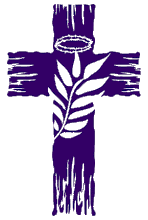The revolution of computers
The development of the modern day computer was the result of advances in technologies and man's need to quantify. Papyrus helped early man to record language and numbers.
The abacus was one of the first counting machines. An arabic number system that is used for calculation. Some of the earlier mechanical counting machines lacked the technology to make the design work. For instance, some had parts made of wood prior to metal manipulation and manufacturing. Imagine the wear on wooden gears. But out of more human needs, abacus can no longer satisfy the new demand for highly complicated and repetitive tasks of calculations. This new demand had prompted the humans to invent more calculating tools. And to make it short, one of these is the computer. The following are the important landmarks of the computer revolution.
On the 1939 Konrad Zuse invented the series of computers named: Z1, Z2,Z3 and Z4. Where Z1 is, Z2 is and Z3 is lastly Z4 is after he invented he known as “inventor of the modern computer”. On the same year ABC was invented. ABC stands for Anatasoff-Berry Computer named from the great inventor by John Atanasoff &Clifford Berry. This computer was known as First electronic-digital computer.
The year 1940 Howard Aiken invented Mark 1 on 1944. This computer was known as first large-scale automatic digital computer in the USA. It is 55 feet long and 8 feet high. The 5-ton device contained almost 760,000 separate pieces. Used by the US Navy for gunnery and ballistic calculations. On the same year 1940 the first a calculating device for writing artillery-firing tables (the settings used for different weapons under varied conditions for target accuracy) is invented by John Mauchly & Presper Eckert named ENIAC (Electrical Numerical Integrator And Calculator). When the world war 2 was over they invented UNIVAC by Mauchly and Eckert. UNIVAC was known as first general-purpose commercial computer and was seen in the public when US census bureau in 1951. UNIVAC stand for UNIVersal Automatic Computer I and was considered as the first generation of computers that was built using vacuum tubes.
1948 at Bell laboratories three physicists invented Transistor that could perform and accomplish the same function like the vacuum tube. Transistors invented by J. Bardeen,H.W. Brattain and W. Shockely were first used to build computers in 1956 and that is the beginning of the computers in second generation.
In mid 1960’s transitor-based computers were replaced by smaller and more powerful third- generation computers built around the concept of integrated circuit (IC). Th IC is a technology that integrates hundreds of transistors in one single tiny similar chip.
In 11969, the first microprocessor(the brain of the computer) was first invented. This invented. This invention was considered the beginning of the fourth generation of computers.
In mid 1970’s Apple, Tandy and Commodore computer companies had introduced the first low-cost computers that are considered powerful as many of the room-sized computers in early 1950’s and 1960’s.
Monday, November 17, 2008
Subscribe to:
Post Comments (Atom)

No comments:
Post a Comment